USPTR - tennis teaching diplomas and seminars
Even today in my travels not many people have even heard of the USPTR. Without being in their pay, or on their radar, I need to write an article about them, because without them I wouldn't have achieved what I have as a player and as a coach. I owe the USPTR this.
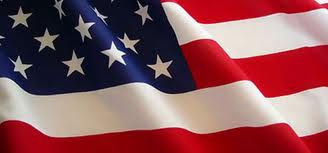
USPTR - American tennis culture
In other correspondence I have indicated the huge disappointment that I had when taking my first teaching certificate for the British LTA in London in 1982. My start in tennis teaching was thoroughly miserable. I had no motivation to take further LTA Certifcates, and I had gained nothing from them in methodology. The routines presented were impractical, and unclear. I felt that I was on a course to teach people dance steps, as if once the feet are in the right place, and you create the right circles with your arms, that you'll hit the ball well. I have to confess that before this, I think three years before, my grandmother had bought me a training course for one week up at her house near London. My younger sister was on the course. She won more medals which annoyed me! I didn't enjioy the course at all, although it was from one of the most reputed tennis schools in Surrey. At the course this "dance step, circles" routine was also on the menu. I hated it then, and I hated it even more when somebody tried to pass it off as 'tennis teaching". At the LTA tennis exam at least they recognised, in a résumé of my exam performance, my enthusiasm. They also noticed my inability to perform correct demonstrations and learning sequences. I didn't believe in it, so I baulked.
Tennis Certificates
So I then suffered three quite depressing tennis years until 1985. In between times I had done some coaching, but nothing in an official long term club situation. I was still playing as many tournaments as I could, and this stopped me getting too close to a club. I did move to one of the biggest clubs in the South East, to Tunbridge Wells, where I developed a couple of good tennis friendships, found some partners who'd play with me in the daytime (we didn't have a hall).
There I also saw tennis coaches at work. I think a couple of them had the LTA Level 3 as it was then, the highest possible diploma. Neither of these was a full-time pro. Nothing wrong with this, especially when nobody could guaranteee work in winter there being no halls. Even in summer the work was a bit iffy, because Tunbridge Wells was principally a grass tennis club. Grass!
The real problem with NOT being full-time is that you have a day job, you have other interests and pressures, and tennis is purely a hobby for this type of coach. A full-time coach obliges himself to be ultra-professional and up to date. He won't survive if he isn't. The irony is that there are plenty of full-time coaches who are ultra professional, but not in fact particularly good coaches. The fact that they are full-time pros means that they will always find ways of getting work, regardless of their coaching skills. I have seen some good part-time coaches, but mostly they have been specialists, say kiddies tennis, or fitness training, or seniors tennis. It is difficult being part-time and catering for the full palette. You can only teach what falls in your available time, in your available season. In Germany for instance there were some part-time coaches who were school teachers. School finished at 13 h 00 in Germany, so they often comfortably got involved in kiddies coaching.
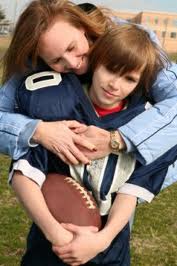
Tennis and schools
So even in Tunbridge Wells I found these LTA Part Three coaches inaccessible, unconvincing, and neither of them had any track record, despite their experience. On the club notice board they were the "official" club coaches, but it was only really a recognition of their diplomas. They only coached certain people. I remember one of them expressly gave dozens of hours to one of the rivals of a girl that I coached. She was a more experienced, more successful player than my prodigy, and by fixing himself on one of the successful juniors in the club, and not a lot else, he somehow justified his position. I watched him a lot, and I wouldn't have wanted to be coached by him. He too liked the "dance step, circles" ideas.
This isn't to say that LTA methods were impregnated deliberately into the qualification programmes. I firmly believe that tennis teaching was still, at all levels, amateur. Science had not touched it. So any efforts to analyse by video, physiological and mechanical aspects, were purely for fun and speculative at best. Courtside coaching didn't exist. It was a man standing there with a basket feeding you with a stream of wordy, mish-mashy information, that he cleverly varied from session to session, as if to say, "I'm talking to you differently today, because you have made progress, moved on, since last week". I found it all a big con.
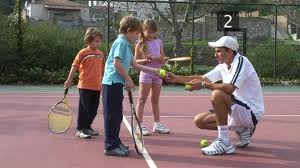
Teaching skills
I was a big magazine reader, and these magazines were lying around the club. I saw an ad for a USPTR residential long weekend coaches course, which'd cost me about £700. The LTA course had cost under £100, so this was serious money. I knew I had to go down this route. Nothing else was available to me, so I had only £700 to lose.
The ad didn't promise much. It did sound simple and a bit technical though. I can't remember the exact words. The ad locked me in. So I planned it in for September 1985, and scraped money together by working on building sites. The course was to be held at Hythe Barn in Kent, not too far from where I live, so it was easy for me to plan in.
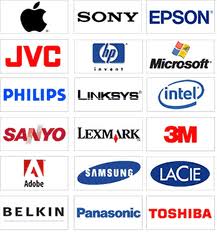
Advertising in tennis
We arrived in Hythe Barn with a big bubble over two tarmac courts. Already this was quite a revelation, I'd never seen anything like it before. I've loved bubbles ever since! We were accommodated in simple farmhouse style student quarters, with a dining room and TV area, and a bar/ relaxing room. It was lovely.
There were only eight of us on the course, and I was the worst player. Even the two girls hit the ball better than me. So I didn't feel great when I saw them warming up. They all had the ball under control, and I didn't. The participants were all younger than me, but I was myself only 24 at this point so I was caught by surprise. Our course convenor I will name, because he was a gem, Piers Bastard. I think he had played Davis Cup for some old African colony, so he was a sort of upper class, ex-colonial, public school type. He had the sort of mix of rigour and detachment that sat very well with me. He had no trouble pulling my leg, which struck a sensitive nerve sometimes when I knew that I was the weakest, but he worked very hard to get me right in the time available. Thank you Piers. My faith in tennis coaching was back on course.

Facilites can make life easy
I'll let you look at a couple of videos, not to see how the USPTR works today, but just to show you what I still consider to be essential basics, and these basics all come from the USPTR. Not from the LTA, nor from any other National Federation coaches I have seen.
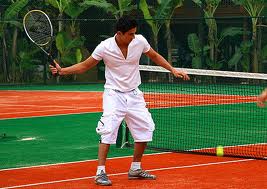
Groundstroke shapes in tennis
I had two real objectives from the weekend, one to learn how to teach tennis, for I wanted to make my career in it. The other was to take my own game apart, and find concrete things to work on.
In coaching we started as beginners. I remember one of our first exercises was a mini-tournament in the service court playing with our wrong hand, so me playing left-handed. I won the tournament! I was so chuffed that everyone may well have beaten me with their correct hands, but I could clean them up with the wrong one! Of course we were only playing contact point tennis, no big complete shots, so I just had to be more determined than them. This exercise was the start of a sequence that showed me how easy it is to teach not only an absolute beginner, but also a non-ball playing type how to get into rally situations in a few minutes.
No other qualification puts such an emphasis on being able to rally. Rallying was something I had no idea about (I only thought of great shots!), so my game already changed in the first lesson. Alos the USPTR is very strong on, as soon you have learned a skill, to put it under pressure, specifically by playing little competitions. I was naturally viciously competitive, and I saw a lot of paedagogical value in integrating technique into competition. I have practised this too quite religiously to this day. Unfortunately competition has become a dirty word in the last ten years or so, especially in juniors, so I am running against the tide with this one. However, competition tennis became my speciality, so I have an excuse there.
The third area where the USPTR grabbed me was the scientific approach. There was an extra manual for it, a little difficult to read, possibly a bit imperfectly put together, but the biomechanical analysis was something that has also stayed with me to this day. I believe in injury prevention, and so much can be avoided by looking after you body properly, on and off the court. It isn't necessarily a "science" as such, a lot of it is common sense, but so many players and coaches choose to ignore it. It's like having a doctor available but not taking his advice. If you havea coach with "scientifically-proven" knowledge, would you take his advice? You choose not to at your peril. This approach affects so many things, your equipment, your body type and habits, your playing style, your schedule, your ambitions and possibilites. Player management is a science. Not only do we want to avoid physical injury, but also moral injury too. The USPTR produced a seperate book on the psychological game too. Once again, a lot of this is obvious, especially if you come from other sports, but there was definite ignorance in tennis teaching in these fields at that time.
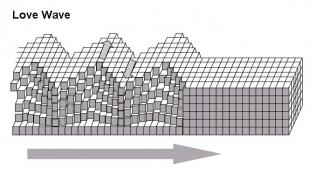
Under pressure
Finally, linked to the science, is the use of technology. We used video, and pulse meters, and fitness machines, and radar guns and such gadgets. Some of it smacked of gadgetry for the sake of it, but the intentions were all good and interesting. Technology is such a help.
The basics of workouttennis
My second objective was to dismantle my own game. I had become a reasonable club player, energetic, competitive and strong. Technically, strategically I was extremely naive. I had the opportunity over three days to work on my contacts, on my shapes, and it was all a revelation. I wasn't going to thrash the world with a three day course, but it gave me great things to work on. I still practise some of these basic routines to this day. If only I had had this when I was 8 or 9, and not 24!
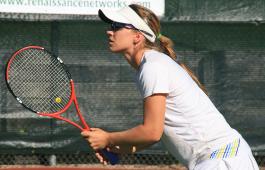
Become a tennis player
I didn't get the highest grade on my diploma, which was a disappointment to me for years afterwards, because I naturally wanted to show that I could learn everything that I needed to in three days. I have to confess that I got the grade I deserved though. My demonstrations were not perfect by any means, and my class organisation and activites were too imprecise. Piers gave me the mark that would keep me coming back for more.
For the next couple of years I went to further USPTR Seminars, all of which were a great pleasure, and extended my knowledge. In other articles you will see references I make to the USPTR, the good people around this organisation, the strong methods, the honesty and hard work behind it. I am no longer a member of the USPTR mainly because I am now not involved in a typical USPTR type activity. I have neither the time nor the need to take further part. With a lot of such training courses and qualifications, a participant should be able to take what he wants from it, and leave what he doesn't. It won't stop me heartily recommending the USPTR to all sorts of tennis people.
Federation or private?
Have A Great Story About This Topic?
Do you have a great story about this? Share it!
Five of our most popular pages
. tournament win
. finding a sponsor
. the touring pro
. the master at work
